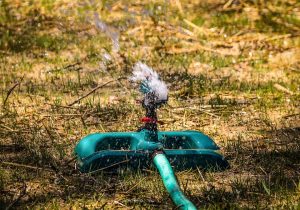Tips for Using Manual and Automatic Sprinklers
When it comes to watering your garden and providing irrigation for your plants, your trusty old garden hose will perform well. The only problem is keeping up and maintaining an efficient watering system that will benefit your lawn and preventing water waste. If you want to use a system that can offer both convenience and efficiency, consider installing either a manual or automatic sprinklers.
Go manual or automatic with sprinklers?
If you’re the type of person who has time to spend on your lawn or garden and don’t mind the job, go for the manual sprinkler system. A manual system also allows you to control the use of water personally, so you can be assured of the efficient use of your resources.
 The only problem with a manual sprinkler system is that it requires someone to open the valves in order to allow the sprinkler to work. This is probably a good system for you if you’re the type of person who has time to spend in the garden. If your lifestyle or work requires you to leave your garden for days or weeks at a time, a manual sprinkler system may not be the right system for you.
The only problem with a manual sprinkler system is that it requires someone to open the valves in order to allow the sprinkler to work. This is probably a good system for you if you’re the type of person who has time to spend in the garden. If your lifestyle or work requires you to leave your garden for days or weeks at a time, a manual sprinkler system may not be the right system for you.
If you prefer a water sprinkler system you don’t have to think about, then choose an automatic sprinkler. This system allows you to water your plants on a set schedule. When used properly, an automatic sprinkler system can provide an efficient watering system for your lawn, giving you more time to take care of other things. Incorrect use of an automatic sprinkler system can often lead to the use of about 30% to 50% more water than your garden or lawn needs.
There are different types of automatic sprinkler systems. Some can even detect moisture levels and turn on automatically if the ground gets too dry. Automatic sprinkler systems have timers that can be electronically controlled, so the sprinkler can turn on or off without any manipulation from you.
Sprinkler types
 There are different sprinkler types that you can use uniformly or in combination, depending on the needs of your lawn. A rotary sprinkler is one that spins 360 degrees, sprinkling water in a circle and is ideal for use in garden beds and small lawns. This covers about 50 feet in diameter. Water pressure may be adjusted.
There are different sprinkler types that you can use uniformly or in combination, depending on the needs of your lawn. A rotary sprinkler is one that spins 360 degrees, sprinkling water in a circle and is ideal for use in garden beds and small lawns. This covers about 50 feet in diameter. Water pressure may be adjusted.
Spray sprinklers throw water like fountains and cover about 10 to 30 feet of lawn space. This is a good sprinkler to use if your lawn area is small or irregularly-shaped. An oscillating sprinkler allows for quick watering and is probably the most common. It also has the highest lawn coverage and is ideal for rectangular lawns.
An impulse sprinkler rotates partially or in full and shoots water at intervals. This offers coverage of about 80 feet and is best used in large lawns and garden beds. Although water flow may be adjusted, this is the type of sprinkler that shoots water slowly and is ideal if you have newly planted seeds or plants.
Spacing your sprinklers
It’s important that you take measurements and plan or design a layout for your sprinkler system. This will save you from a lot of wasted effort and unnecessary equipment. Consider the size and shape of your lawn to determine the number and placement of the sprinkler heads and the right water pressure to use. If your lawn is especially large, you might also need to use more than one water circuit.
Where to position your sprinkler heads is an important consideration. Your main objective is uniformity in terms of water coverage, so you’ll need to make sure that one sprinkler head will throw water that will overlap the next sprinkler head. Sprinklers are designed this way, to make sure that they don’t miss watering certain areas of your lawn.
Overlapping is referred to as head to head coverage or spacing, which assures no dry spots. Position sprinklers to provide 80-100% overlap. While this may seem like a lot, you’ll see the difference if you try a sprinkler system with heads that are farther away from each other. Try to keep to the recommended sprinkler head positioning to ensure uniform watering. Sprinkler heads are often installed using a square grid or triangular layout.
Digging your trenches
Digging is probably the most important and most time consuming part of your sprinkler system installation. Take note of your soil type and make sure to not to touch or damage any underground utilities. If you can, use a trencher to shorten your digging time and make installation easier. By using a trencher, you’ll have a less messy job.
Trenches should be from 6″ to 10″ deep. You might also allow for a ¼” drop every five feet to allow water to drain in one direction during the winter. With hard work, you’ll probably complete this project within about least 3 days, more if your yard is bigger.



Comments are closed, but trackbacks and pingbacks are open.